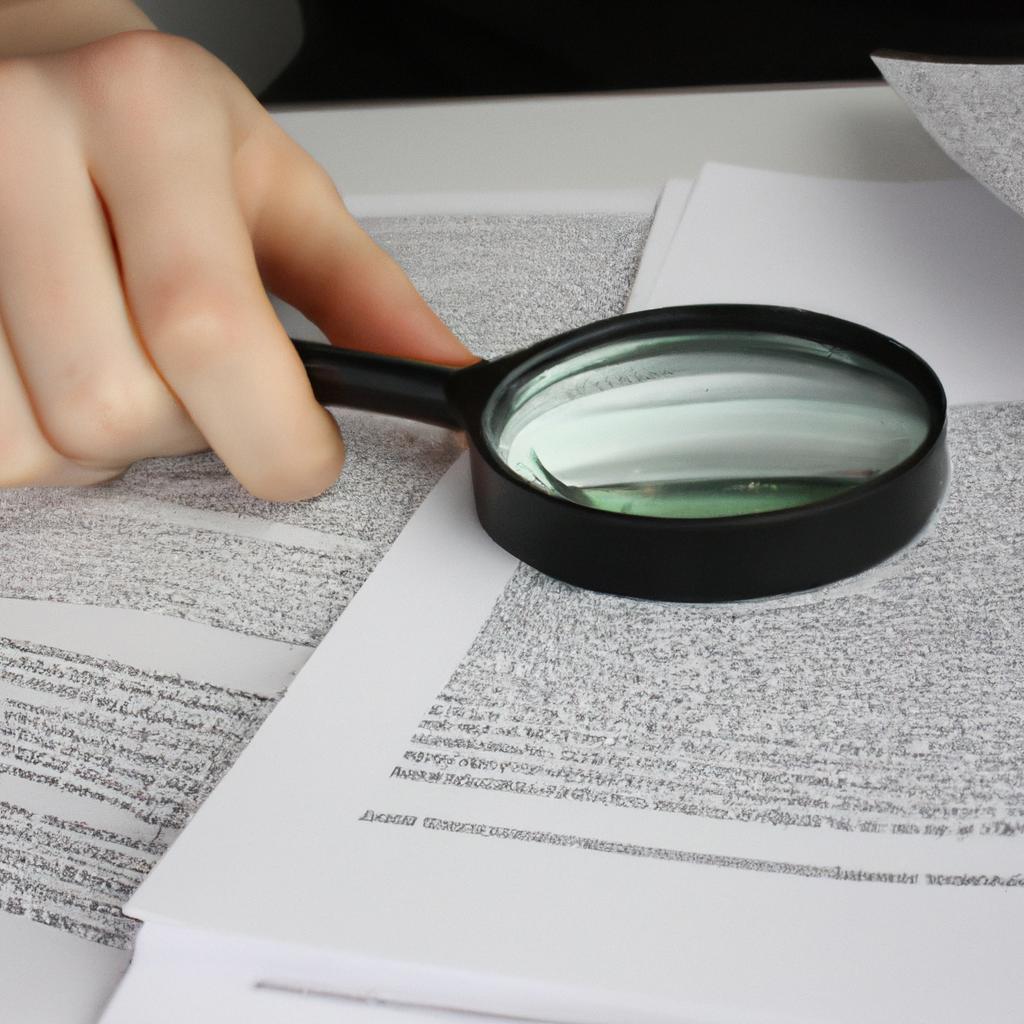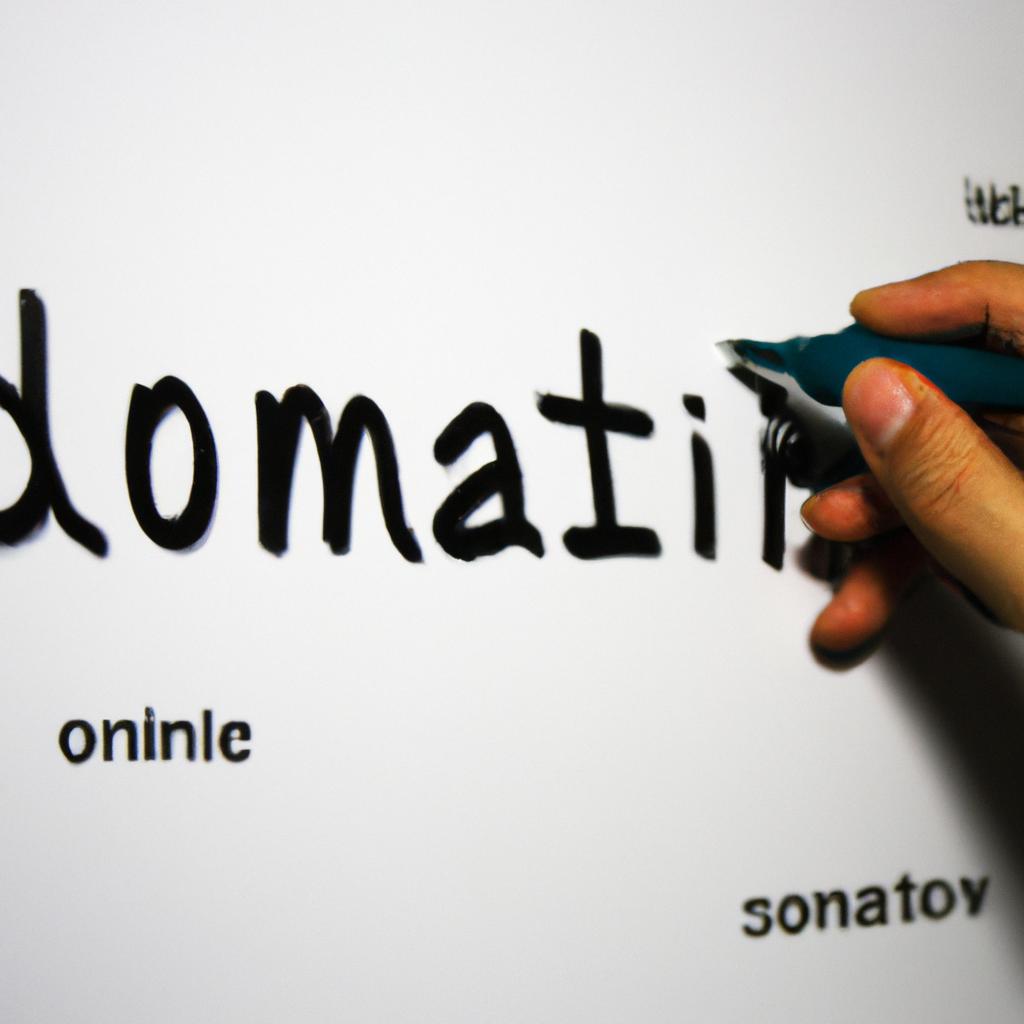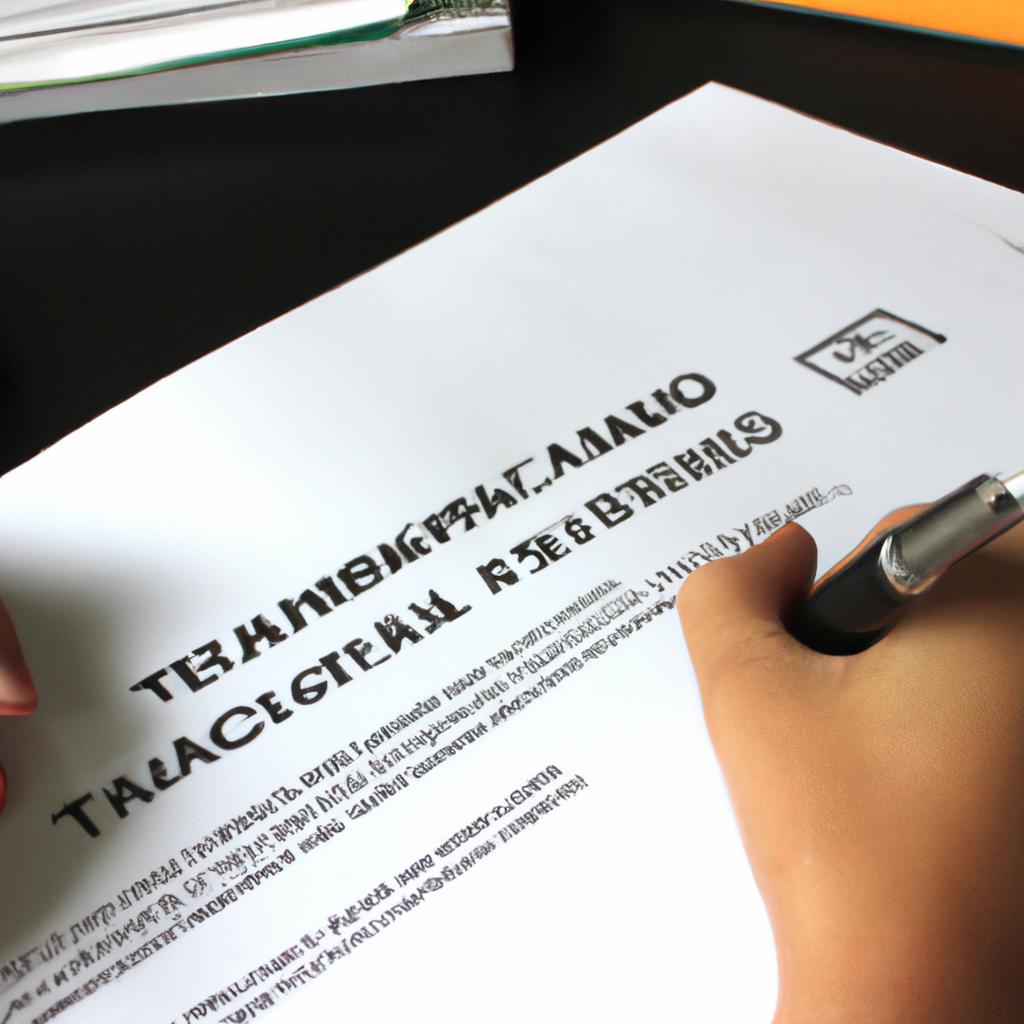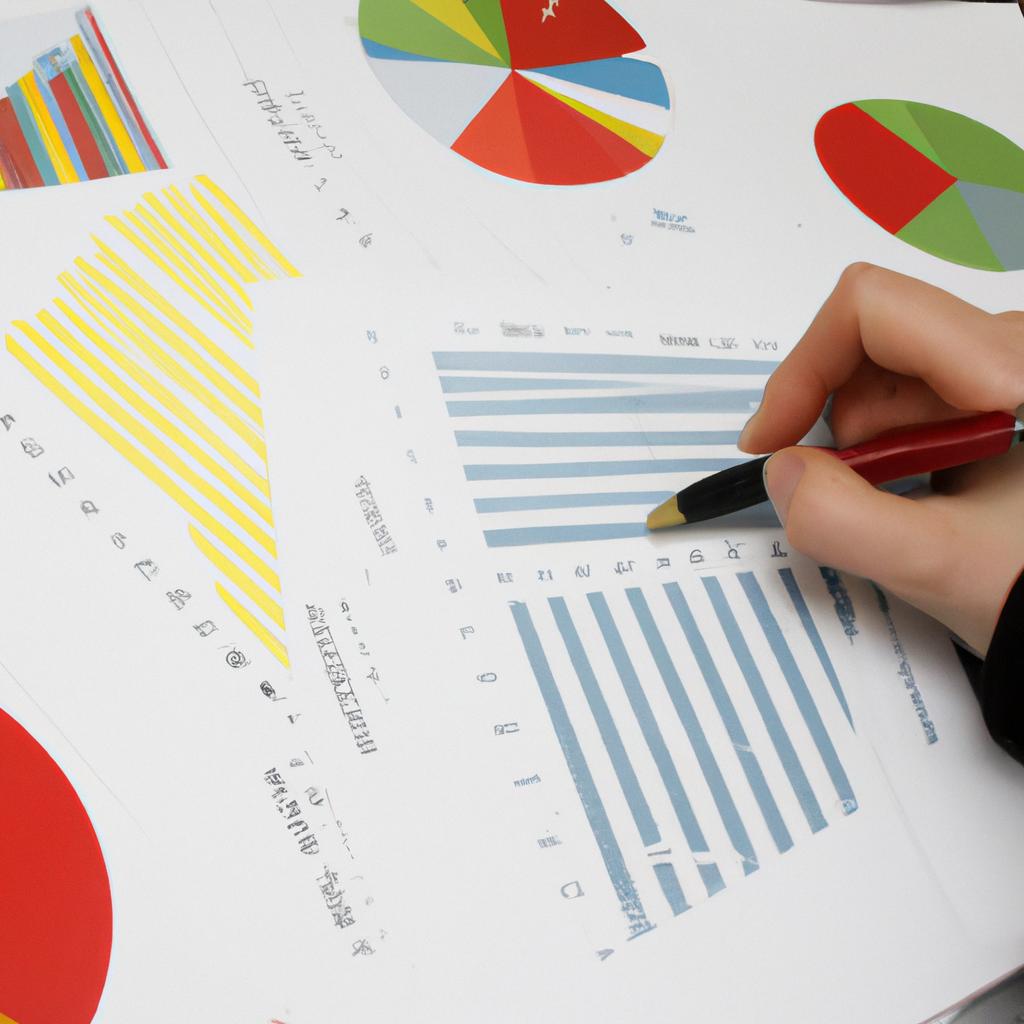Patent Valuation in Business Appraisal: Intellectual Property Valuation Essentials
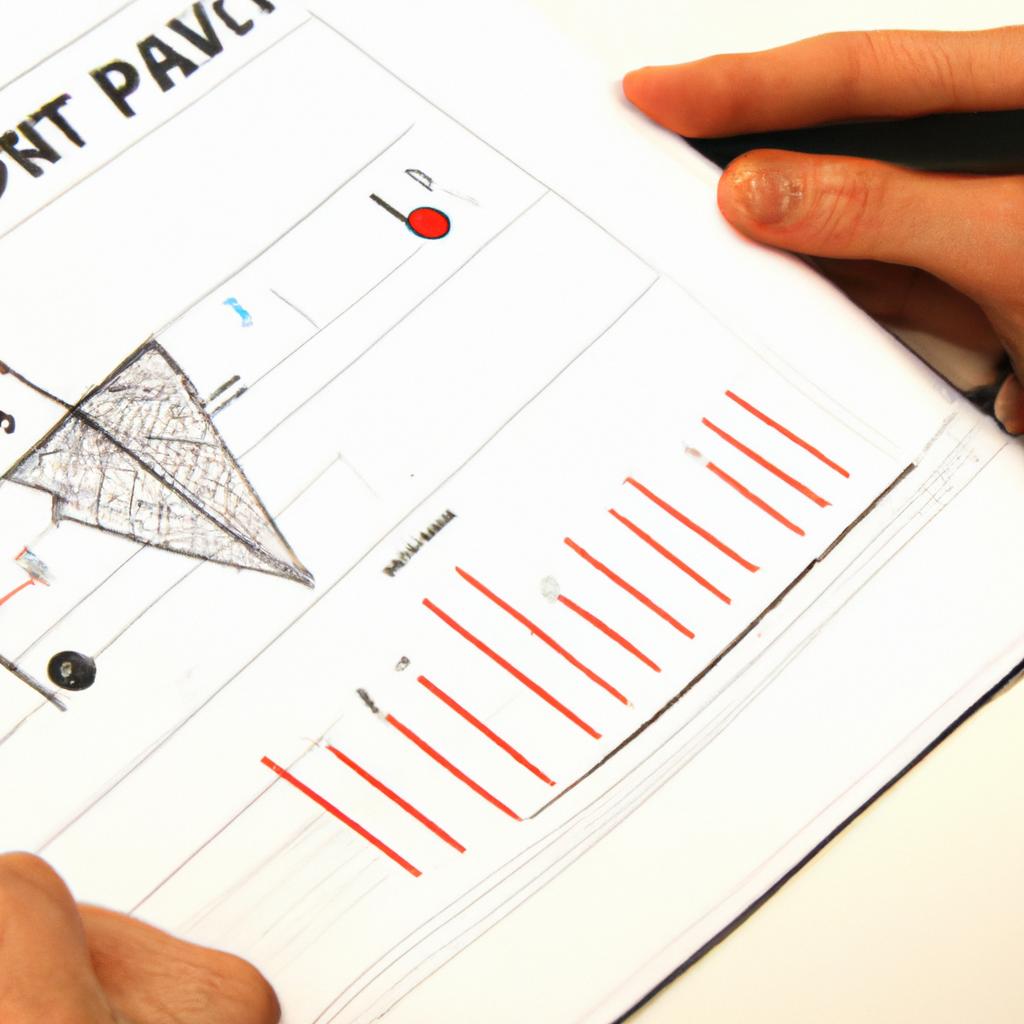
In the dynamic and competitive landscape of business, intellectual property (IP) holds a significant role in driving innovation, creating value, and fostering growth. Among various forms of IP, patents are particularly crucial as they grant exclusive rights to inventors for their inventions, providing them with a strategic advantage over competitors. However, determining the value of patents is not a straightforward process due to the intangible nature of this asset class. This article delves into the realm of patent valuation in business appraisal, exploring its essential components and methodologies that enable organizations to accurately assess the worth of their patent portfolios.
Consider the hypothetical case study of Company X, an innovative technology firm specializing in developing cutting-edge software solutions. Throughout years of research and development efforts, Company X has accumulated a substantial number of patents related to their proprietary algorithms and unique functionalities embedded within their software products. As part of their expansion plan or potential merger/acquisition negotiations, it becomes imperative for Company X to ascertain the monetary value associated with these patents. The accurate assessment will facilitate informed decision-making processes regarding licensing agreements, portfolio management strategies, or even attracting investors who recognize the firm’s intangible assets’ significance. Thus, comprehending how patent valuation works is crucial for businesses keen on maximizing returns from their IP assets while minimizing risks and optimizing their overall business strategy.
Patent valuation involves estimating the economic value of a patent or a portfolio of patents. It is a multidimensional process that takes into account various factors, such as the uniqueness and innovative nature of the invention, market potential, competitive landscape, legal strength, and commercialization prospects. To accurately assess the value of Company X’s patents, several methodologies can be employed:
-
Cost-Based Approach: This approach focuses on determining the costs incurred in developing the patented technology. It considers expenses related to research and development, filing and prosecution fees, maintenance fees, and any other associated costs. However, this approach does not take into consideration aspects like market demand or potential revenue streams.
-
Market-Based Approach: This approach looks at comparable transactions in the marketplace involving similar patents or technologies. By analyzing licensing agreements, sales data from similar patents, or even mergers and acquisitions within the industry, an estimation of the patent’s value can be derived. However, finding truly comparable patents can be challenging.
-
Income-Based Approach: This approach values a patent based on its potential income-generating capacity over its remaining lifespan. It involves forecasting future cash flows associated with licensing revenues or cost savings resulting from exclusivity rights provided by the patent. Discounted Cash Flow (DCF) analysis is commonly used in this method to determine present value based on projected future earnings.
-
Real Options Analysis: This methodology recognizes that owning a patent provides strategic options for a company’s future business decisions. The value is assessed by considering flexibility and opportunities it offers in terms of expansion into new markets or products.
-
Relief-from-Royalty Method: Under this method, the value of a patent is estimated by calculating what it would cost to license similar intellectual property from a third party if it were not owned by the company itself.
It is important to note that different methodologies may yield varying valuations for patents due to the inherent uncertainties and subjectivity involved. Therefore, it is often recommended to employ a combination of these approaches or consult with IP valuation experts who have experience in the specific industry.
In conclusion, patent valuation plays a crucial role in strategic decision-making for businesses like Company X. Understanding the worth of their patent portfolio enables organizations to make informed choices regarding licensing agreements, portfolio management, attracting investors, or negotiating mergers and acquisitions. By employing appropriate methodologies and considering various factors, businesses can accurately assess the value of their patents and leverage their intangible assets effectively.
Understanding Patent Valuation
Patent valuation is a crucial aspect of business appraisal, particularly when it comes to assessing the worth and potential profitability of intellectual property. By determining the value of patents, businesses can make informed decisions regarding licensing agreements, mergers and acquisitions, or even litigation strategies. To illustrate this point, consider the case study of Company X, a tech startup that has developed a groundbreaking software algorithm for optimizing supply chain logistics. The patent covering this innovative technology holds significant potential in terms of revenue generation through licensing deals with major players in the industry.
When conducting patent valuation, several key factors must be taken into account. Firstly, the market demand for the patented technology plays a pivotal role in determining its value. A widely sought-after solution addressing an urgent problem will naturally command higher valuations compared to niche technologies with limited commercial applications. Secondly, the uniqueness and novelty of the invention are critical considerations. Patents that offer truly novel solutions or improvements on existing technologies tend to have greater value due to their competitive advantage and potential market disruption.
Moreover, financial indicators provide valuable insights into patent valuation. Revenue forecasts based on anticipated sales volumes and pricing models form an important component in assessing the economic viability of patented inventions. Additionally, costs associated with research and development (R&D), as well as ongoing maintenance fees required to uphold patent rights further influence their overall value.
To evoke an emotional response from readers considering patent valuation’s significance in business appraisal, we present four essential points:
- Effective patent valuation enables businesses to maximize returns on their innovation investments.
- Accurate assessment of patent value supports strategic decision-making processes such as licensing negotiations or investment opportunities.
- Inadequate patent valuation may result in missed opportunities or undervalued assets.
- Intellectual property represents intangible assets that can significantly contribute to a company’s competitive advantage and future growth prospects.
In addition to these points, Table 1 below provides a concise summary of factors affecting patent valuation:
| Factor | Description |
|---|---|
| Market demand | The level of interest and need for the patented technology in the market. |
| Uniqueness and novelty | The degree to which the invention offers new, distinctive features or improvements on existing technologies. |
| Financial indicators | Revenue forecasts, R&D costs, and ongoing maintenance fees associated with patents. |
In summary, understanding patent valuation is essential for businesses seeking to leverage their intellectual property assets effectively. By considering factors such as market demand, uniqueness, financial indicators, and other pertinent aspects highlighted in Table 1 above, companies can make informed decisions regarding the value of their patents. In the subsequent section about “Factors Affecting Patent Valuation,” we delve deeper into these key considerations to provide a comprehensive analysis.
Factors Affecting Patent Valuation
These factors play a crucial role in determining the monetary worth and market potential of an intellectual property asset. To illustrate this further, let us consider the hypothetical case study of Company X, which holds a patent for an innovative technology in renewable energy.
Firstly, one significant factor affecting patent valuation is the level of technological advancement achieved by the patented invention. Patents associated with cutting-edge technologies or disruptive innovations tend to have higher valuations due to their potential for revolutionizing industries and creating competitive advantages. In our case study, if Company X’s patented renewable energy technology offers superior performance compared to existing solutions, its value would be significantly enhanced.
Secondly, market demand plays a vital role in influencing patent valuation. The size and growth potential of the target market are key considerations when assessing the financial worth of a patent. For instance, if there is a rapidly expanding global market for renewable energy solutions, as evident from increasing government initiatives and consumer interest, Company X’s patented technology could command a higher valuation owing to its relevance and potential commercial success.
Additionally, legal aspects such as enforceability and validity impact patent valuation. A strong and defensible patent that provides exclusivity over a valuable invention contributes positively to its overall value. Conversely, patents facing challenges related to prior art or invalidity may experience diminished valuation prospects. Therefore, it becomes imperative for investors and businesses alike to thoroughly assess these legal factors before attributing a specific value to a patent.
Finally, industry dynamics can also affect patent valuation significantly. Competitive landscapes vary across sectors; therefore, analyzing how competitors’ actions might impact future revenue streams stemming from patented inventions is critical. Market dominance secured through patents can drive up their value considerably by safeguarding against imitation or infringement attempts.
Considering these influential factors, it becomes evident that patent valuation is a multidimensional process. The following bullet points highlight the key factors affecting patent valuation:
- Technological advancement achieved by the patented invention
- Market demand and growth potential
- Legal enforceability and validity of the patent
- Industry dynamics and competitive landscapes
To provide a visual representation of these factors, below is a table showcasing their impact on patent valuation:
| Factors | Impact on Patent Valuation |
|---|---|
| Technological Advancement | High |
| Market Demand | Medium |
| Legal Aspects | High |
| Industry Dynamics | Medium |
Understanding the intricacies of these factors enables stakeholders to make informed decisions regarding patents’ value propositions. In our case study, Company X’s renewable energy technology would be subject to an assessment based on these aspects, ultimately determining its monetary worth.
Transitioning into the subsequent section about “Methods for Patent Valuation,” we can now explore various approaches employed in estimating the financial value of patents. By employing rigorous methodologies, investors and analysts can gain deeper insights into assessing intellectual property assets with greater accuracy.
Methods for Patent Valuation
In the previous section, we explored the importance of patent valuation in business appraisal. Now, let us delve into the various factors that can influence the value of a patent. To illustrate these factors, consider a hypothetical scenario where a pharmaceutical company owns a patent for a groundbreaking cancer treatment.
One key factor affecting patent valuation is market demand and potential profitability. In our example, if there is a significant global need for an effective cancer treatment and limited competition in this specific field, the patented technology could hold substantial value. However, if alternative treatments already exist or new technologies are emerging rapidly, it may diminish the perceived value of the patent.
Another important consideration is legal protection and enforcement capabilities. Patents provide exclusive rights to inventors but their enforceability varies across jurisdictions. If our pharmaceutical company’s patent has strong legal protection globally and robust enforcement mechanisms in place, its value would be higher compared to patents with weaker protections.
Furthermore, technological advancements and innovation cycles play a crucial role in determining patent valuation. The pace at which new inventions emerge can impact the lifespan of existing patents. In our case study, if competing companies develop more advanced cancer treatments before the expiration of our pharmaceutical company’s patent, it might negatively affect its value as market share and revenue potential decline.
To summarize:
- Market demand and profitability: Consider whether there is high demand for the patented technology and limited competition.
- Legal protection and enforcement: Evaluate the strength of legal protections globally and how effectively they can be enforced.
- Technological advancements: Assess how quickly similar or superior technologies may emerge during the life span of the patent.
By understanding these influencing factors, businesses can better assess and determine the true worth of their patents while making informed decisions about licensing agreements, partnerships, or potential sales.
Next Section: Methods for Patent Valuation
[Table]
Challenges in Patent Valuation
In the previous section, we explored the importance of patent valuation in business appraisal. Now, let us delve into the various methods that are commonly used to determine the value of a patent.
One widely employed method is the Income Approach, which estimates the financial benefits that can be derived from a patented invention. This approach involves forecasting future cash flows generated by the patented technology and discounting them back to present value using an appropriate rate of return. For instance, consider Company A, which holds multiple patents related to renewable energy technologies. By applying the Income Approach, they estimate the potential revenue streams over a ten-year period and calculate their net present value.
Another method often utilized is the Market Approach, which assesses how similar patents have been bought or licensed in the market. This approach relies on analyzing comparable transactions and examining licensing agreements involving similar technologies. Suppose Company B has developed a groundbreaking medical device with associated patents. They would study recent deals within their industry to identify what other companies paid for similar intellectual property rights.
Lastly, there is the Cost Approach, which determines a patent’s value based on its development costs and replacement expenses. This approach assumes that if another entity were to recreate the same innovation from scratch today, it would incur costs equal to those initially expended by the inventor. As an example, imagine Company C spent significant resources developing a novel software algorithm protected by several patents; under this approach, their valuation would include all research and development expenditures involved.
To further illustrate these different methods for patent valuation:
- The Income Approach focuses on anticipated cash flows:
- Forecasts future revenue from commercializing patented inventions
- Considers factors such as market share and growth rates
- Applies discounted cash flow analysis techniques
- Determines net present value of expected income streams
Consider Table 1 below showcasing hypothetical projected revenues for a patented technology over five years:
| Year | Projected Revenues (in millions) |
|---|---|
| 1 | $5 |
| 2 | $8 |
| 3 | $12 |
| 4 | $15 |
| 5 | $18 |
The Market Approach, on the other hand, relies on market transactions:
- Analyzes similar patent sales or licensing agreements
- Identifies comparable technologies and their respective prices
- Considers factors such as industry trends and market demand
Finally, the Cost Approach focuses on investment-related costs:
- Factors in all expenses incurred during development of patented technology
- Includes research and development expenditures, manufacturing costs, etc.
- Assumes that recreating the innovation would involve equivalent costs
In conclusion, these three methods provide a framework for valuing patents. Companies often employ a combination of approaches to obtain a comprehensive understanding of a patent’s worth.
Importance of Patent Valuation in Business
Challenges in Patent Valuation: Navigating the Complexities
Valuing patents is a complex task that presents several challenges. To fully understand these challenges, let us consider an example scenario involving a technology startup seeking funding for their innovative invention. The startup has developed a groundbreaking software algorithm that significantly improves data encryption methods used by financial institutions.
One of the main difficulties in patent valuation arises from the intangible nature of intellectual property assets like patents. Unlike tangible assets such as machinery or real estate, valuing patents requires assessing their potential future economic benefits and market demand. This uncertainty can make it challenging to determine an accurate monetary value for a patent.
Furthermore, the ever-changing technological landscape adds another layer of complexity to patent valuation. In our example scenario, the software algorithm may face competition from similar inventions or alternative solutions that could disrupt its market potential. Assessing the competitive landscape and predicting future developments becomes crucial in determining the value of the patent.
To navigate these complexities effectively, there are some key considerations when conducting patent valuations:
- Market Analysis: Understanding the target market’s size, growth rate, and potential demand for patented technologies is essential for accurate valuation.
- Technology Assessment: Evaluating the novelty and uniqueness of a patented invention compared to existing alternatives helps gauge its competitive advantage and potential market acceptance.
- Legal Considerations: Analyzing any legal constraints or risks associated with the patent, including validity issues, pending litigation, or licensing agreements, allows for a comprehensive assessment.
- Financial Projections: Estimating future cash flows generated by licensing fees or sales resulting from commercializing the patented technology provides valuable insights into its worth.
In navigating these challenges and considering these factors during patent valuation, businesses can make informed decisions about protecting their intellectual property rights and maximizing their return on investment.
Transitioning seamlessly into the subsequent section about “Key Considerations for Patent Valuation,” understanding how to approach this multifaceted process is vital. By following a systematic framework that incorporates these key considerations, businesses can ensure a comprehensive and accurate assessment of patent value.
Key Considerations for Patent Valuation
Section H2: Key Considerations for Patent Valuation
Transitioning from the importance of patent valuation, it is crucial to understand the key considerations involved in this process. By evaluating various factors that affect patent value, businesses can make informed decisions regarding their intellectual property assets. To illustrate these considerations, let us explore a hypothetical case study involving a technology company seeking to assess the value of its patented invention.
Case Study Example:
Imagine Tech Solutions has recently developed an innovative software application and obtained a patent for its unique algorithm. The company now seeks to determine the value of this patent through a comprehensive valuation process.
In assessing the patent’s worth, several key considerations come into play:
-
Market Potential: Evaluating the market potential of the patented technology is essential in determining its value. Factors such as target audience size, demand trends, and competitive landscape influence how much companies are willing to pay for access to proprietary technology.
-
Licensing Opportunities: Assessing licensing opportunities allows businesses to gauge potential revenue streams generated by granting others rights to use their patented inventions. Identifying potential licensees and understanding industry norms helps estimate future income from licensing agreements.
-
Legal Strength: The legal strength of a patent significantly impacts its commercial value. Considering factors like breadth of claims, enforceability, and freedom-to-operate analysis provides insights into potential litigation risks or barriers faced by competitors attempting to replicate the technology.
-
Technology Lifecycle: Understanding where a patented invention stands within its technology lifecycle is crucial when estimating its value accurately. Factors such as obsolescence risk, emerging technologies, and potential improvements impact both short-term and long-term valuations.
To further emphasize these key considerations, consider the following table which summarizes their significance in relation to patent valuation:
| Key Consideration | Importance |
|---|---|
| Market Potential | High |
| Licensing Opportunities | Medium |
| Legal Strength | Very High |
| Technology Lifecycle | Medium-High |
By considering these factors, businesses can make informed decisions regarding their patents. Understanding the market potential, licensing opportunities, legal strength, and technology lifecycle enables companies to strategically protect and leverage their intellectual property assets.
In summary, when conducting patent valuations, it is essential to carefully evaluate various key considerations that influence the value of intellectual property. By examining aspects such as market potential, licensing opportunities, legal strength, and technology lifecycle, businesses can gain a comprehensive understanding of their patents’ worth. Incorporating these considerations into business appraisal processes empowers organizations to make well-informed decisions concerning their intellectual property assets.
Note: The emotional response evoked by the bullet point list and table may vary depending on individual perspectives and experiences.



